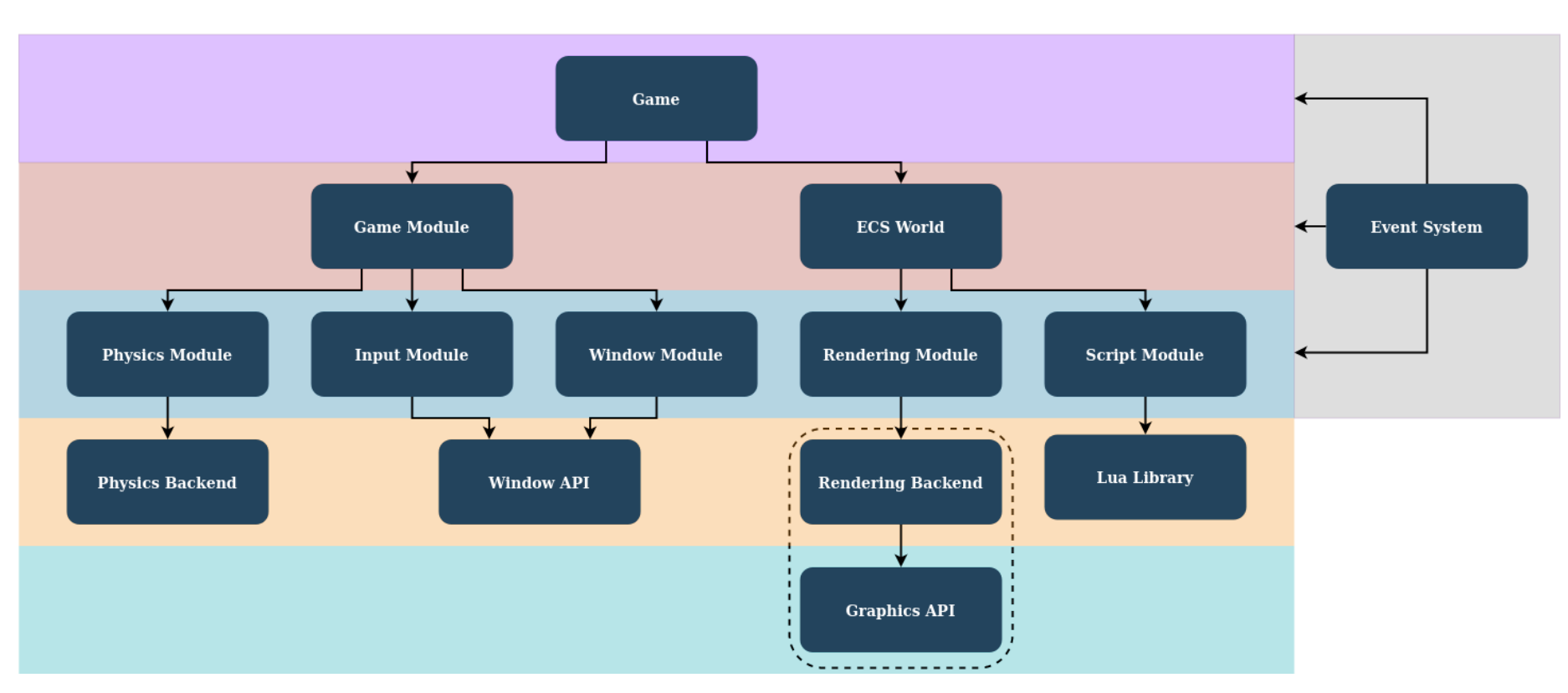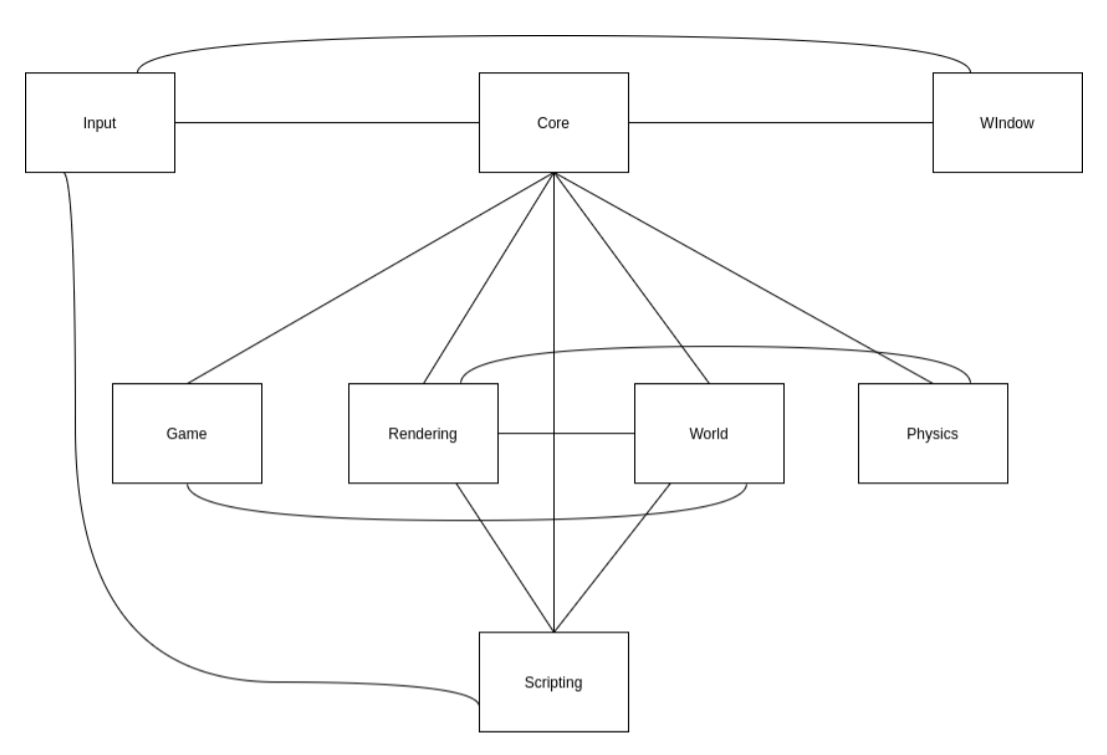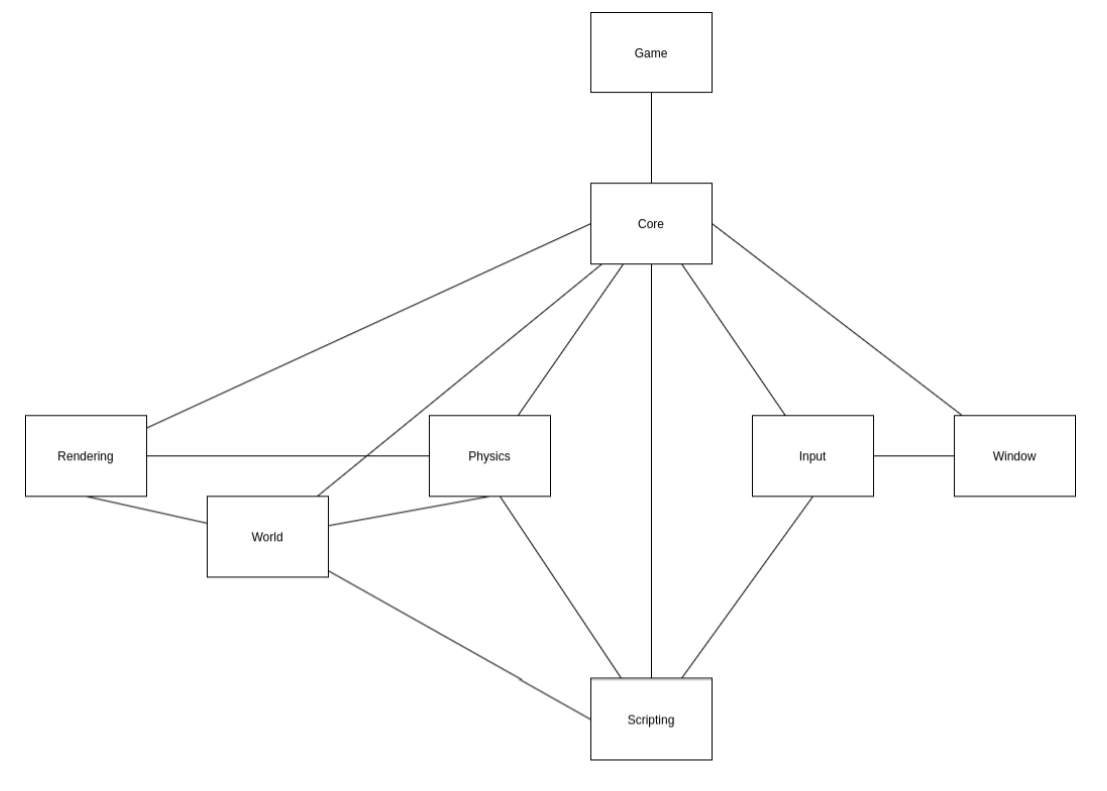evol Architecture
Overview
Any software that is being designed needs to adhere to a specific architecture. Having an explicit architecture allows the design process to be much smoother as architectures come with their own set of rules that can increase consistency across the entire software. A game engine is no different; in fact, as the game engine is a much bigger software than most, it sometimes needs to have multiple architectures with some subsystems having their own ones.
Option #1: Layered Architecture
This architecture is widely used in a lot of software projects. It’s also used in Godot which is currently one of the major game engines. This is mostly because it focuses on its purpose and does it well, and that is to ensure maximum stability by having a defined hierarchy for the responsibilities of each collection of subsystems in a system. Its main idea is that different subsystems can exist on different levels of the software. Having multiple levels with subsystems residing on specific ones starts to become useful when rules are added to these layers, the most important rule is that subsystems can only use functionalities from subsystems that are on a lower layer than they are. This allows the dependencies to be a bit more organized as a subsystem cannot be dependent on another that is on a higher layer.

Figure 1: Layered Architecture
However, the main problem with such an approach is that it is static. Static here means that once a module changes, all other modules that depend on it are affected and might need individual changes to adapt with that change.
Option #2: Plugin Architecture
This architecture is mainly used by open-source game engines, such as: WishEngine and MAGE. The plugin architecture’s main idea is that all subsystems are considered plugins. These plugins are then connected to a core; which is responsible for orchestrating the entire plugin framework and maintaining the plugins so that dependencies are always met. This architecture improves flexibility and extensibility.
The plugin architecture is on the other end of the spectrum with respect to the layered architecture. While the layered architecture has some strict rules regarding how subsystems communicate together, the plugin architecture has no such rules, and all subsystems can communicate with each other freely. Also, while the layered architecture is static, the plugin architecture is dynamic enough for subsystems to be added or removed at runtime.
While this architecture beats the layered architecture in some aspects, and even brings its own advantages, there are some pros to the layered architecture that it just cannot replace. Removing communication criteria ends up convoluting the dependencies between systems to the point that it is no longer possible to predict what a change to the system will break.

Figure 2: Plugin Architecture
Option #3: Hybrid Architecture
Since both architectures have both their pros and cons, it is only logical to think about building a new architecture that has the pros of both architectures and none of their cons. This architecture will be a mix of both with just the right amount of each one so that the engine can be both flexible and scale-able.
This architecture can be achieved by first designing a normal plugin framework, then enforcing the layered architecture’s strict communication rules through a dependency system. Using this design, the engine should have the scale-ability of the plugin architecture while also maintaining the maintainability of the layered architecture.

Figure 3: Hybrid Architecture
Winning Architecture?
While both the layered architecture and the plugin architecture are very stable and tested in widely used game engines, mixing the two architectures together gives an architecture with the pros of both and none of their cons. This gives us a very stable and scale-able architecture that can be easily maintained.
As shown in Figure 3, for such an architecture, there needs to be a single point where everything is coupled. This point will be the core of the entire engine and can be referred to as the “Plugin Framework” as it will be the part of the system that manages the plugins (which will be referred to as “Modules”.)
References
- Introduction to Godot development: https://docs.godotengine.org/en/stable/development/cpp/introduction_to_godot_development.html